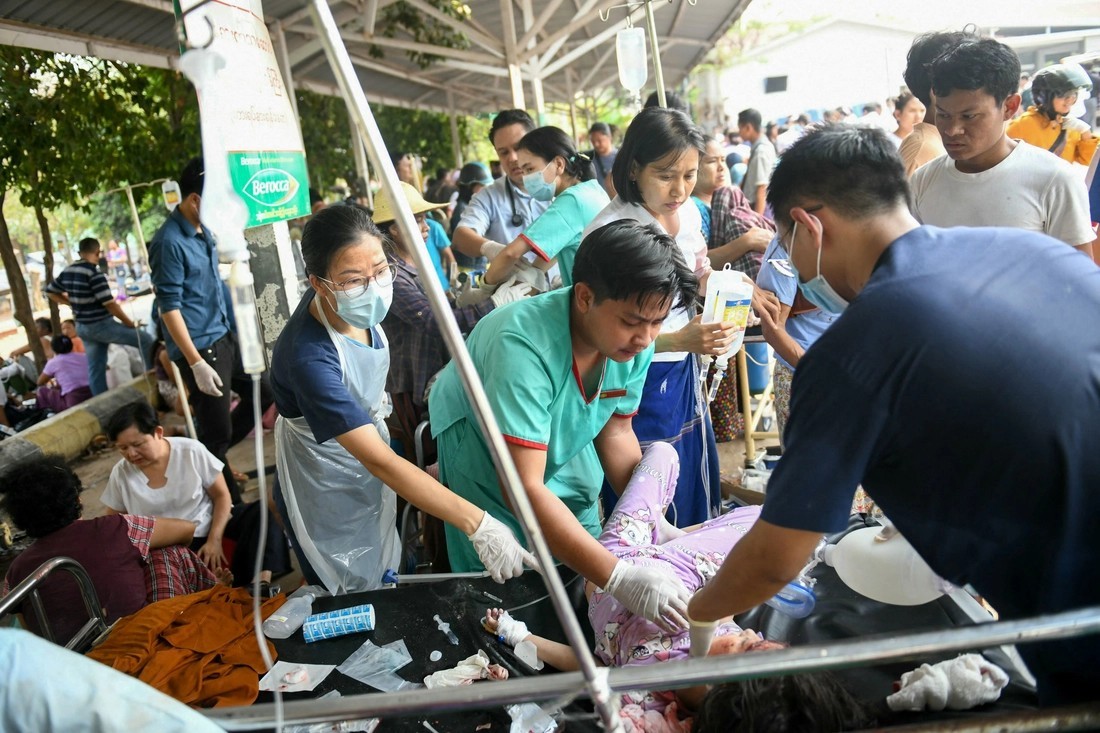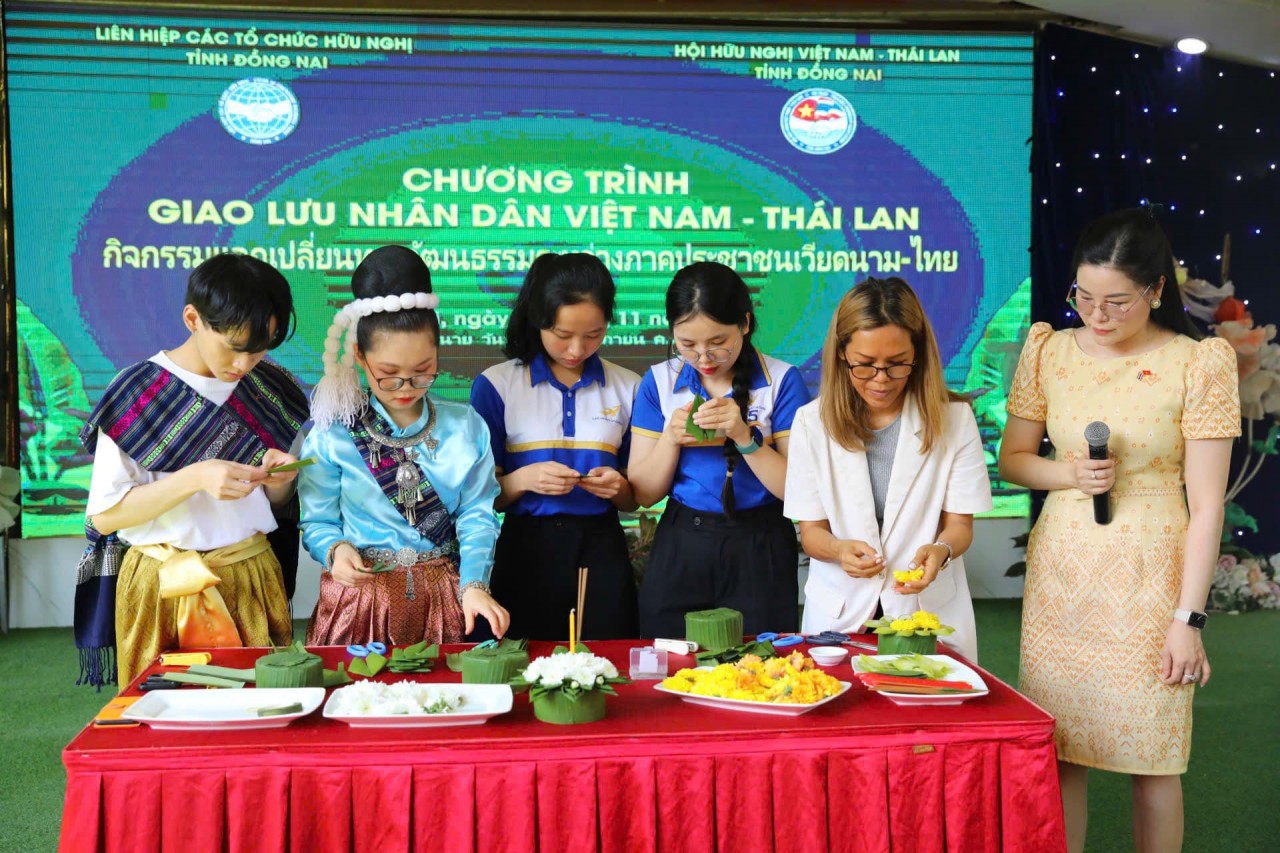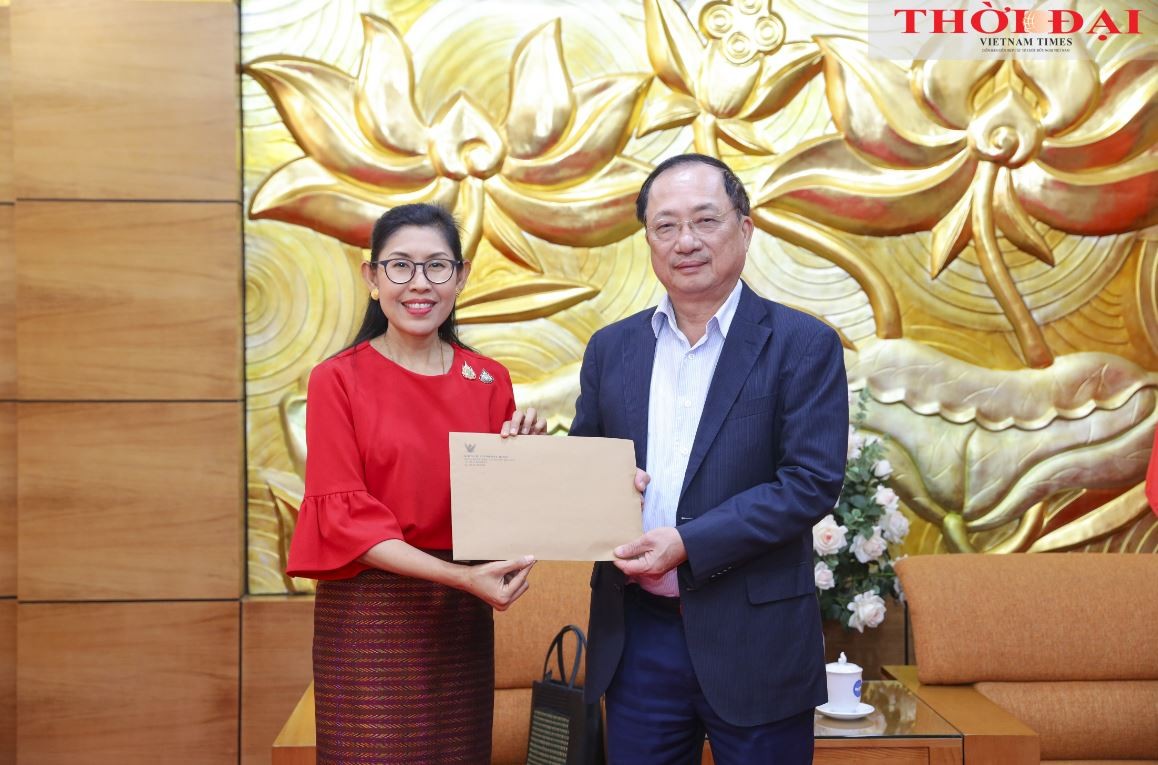Top 9 tourist attractions in Thailand
1. Wat Phra Kaew & Grand Palace
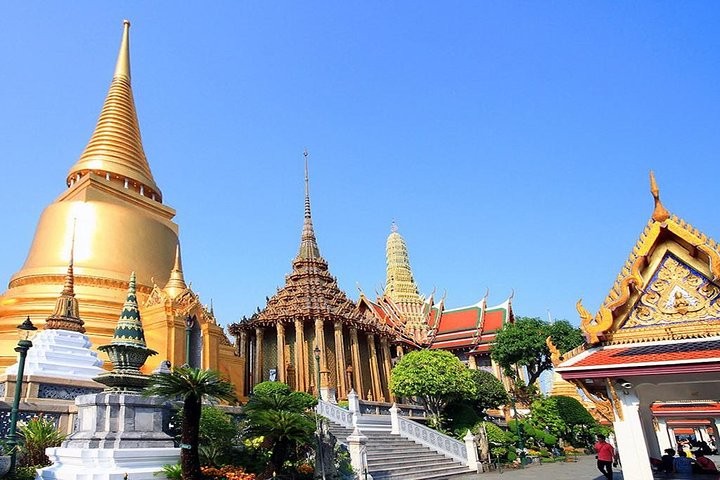 |
| Grand Palace. Photo: Tripadvisor |
At the heart of Bangkok on the bank of the Chao Phraya River is the Royal Grand Palace. Thailand's present monarch does not live in the Royal Grand Palace but did his predecessors reside here before 1925. The Royal Grand Palace is a blending of traditional Thai architecture and 19th-century Beaux-Arts and a window to the royal opulence of Thailand. It is also a venue for royal ceremonies and state functions every year.
Within the walls of the palace compound, the Wat Phra Kaew (Temple of Emerald Buddha) is the main stunt. The temple is the most revered Buddhist shrine in Thailand with its colonnades lined with more than a hundred murals depicting scenes from Ramayana, which provides inspirations for temple murals around the country and even for contemporary Thai art. The famed Emerald Buddha stands 2 feet tall, high above the heads of the worshippers and tourists. Only the Thai King can get close to the statue, which conducts rituals at the temple throughout the year. Note the dress code for entering the temple: no bare shoulders, sandals, and shorts or short skirts, according to Indochinaodysseytours.
Wat Phra Kaew, commonly known in English as the Temple of the Emerald Buddha and officially as Wat Phra Si Rattana Satsadaram, is regarded as the most sacred Buddhist temple in Thailand. The complex consists of a number of buildings within the precincts of the Grand Palace in the historical centre of Bangkok. It houses the statue of the Emerald Buddha, which is venerated as the country's palladium.
Construction of the temple began in 1783 under the orders of Rama I, the first king of the Chakri dynasty. Since then, each successive king has been personally involved in adding, restoring and embellishing the temple during their reigns as a way of making religious merit and glorifying the dynasty. Many important state and royal ceremonies are held within the temple each year, presided by the king in person and attended by government officials. This makes the temple the nation's preeminent place of worship and a national shrine for the monarchy and the state. Throughout the years, each king has donated sacred and valuable objects to the temple, making it a treasury as well.
The temple complex comprises various buildings for specific religious purposes built in a variety of Thai architectural styles, while still adhering to the traditional principles of Thai religious architecture.
2. Wat Arun
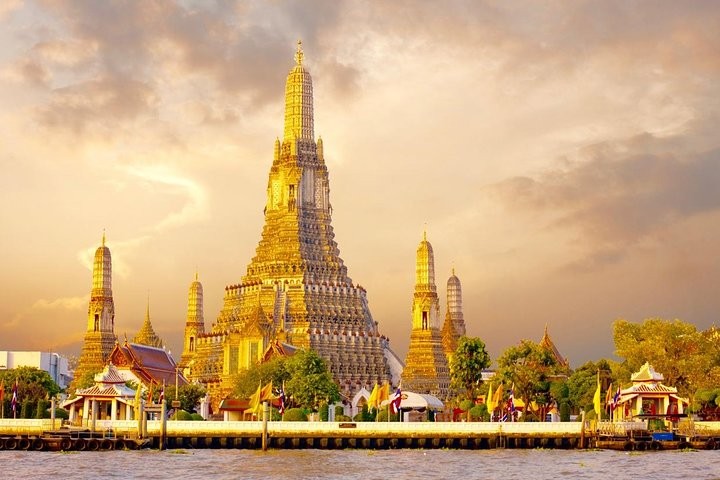 |
| Wat Arun. Photo: Tripadvisor |
Locally called Wat Chaeng, Wat Arun or the Temple of the Dawn, Bangkok, is an ancient temple dating back to the Ayutthaya Period. It used to be called Wat Makok in the Thonburi Period. When the King of Thonburi had the capital moved from Krung Si Ayutthaya to Krung Thonburi, he also brought the Emerald Buddha from Vientiane to enshrine in Wat Arun, before it was later transferred to Wat Phra Kaew (the Temple of the Emerald Buddha). In the Rattanakosin Period, Wat Arun was restored and renamed Wat Arun Ratchatharam by King Rama II. Another restoration finished in the reign of King Rama IV and the temple's name was changed again to Wat Arun Ratchawararam. As one important temple in Thailand history, there are many unique attractions in Wat Arun in Bangkok especially the central prang, a stupa-like pagoda encrusted with colourful glazed porcelain tiles and seashells, Giant statues, the Ordination Hall, the Bell Tower, and many Buddha statues, according to Tourismthailand.
3. Wat Phra That Doi Suthep
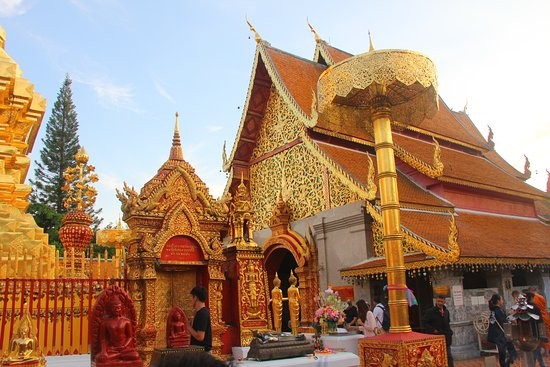 |
| Wat Phra That Doi Suthep. Photo: Tripadvisor |
Wat Phra That Doi Suthep is a Theravada Buddhist temple (wat) in Chiang Mai Province, Thailand. The temple is often referred to as "Doi Suthep" although this is actually the name of the mountain where it's located. It is a sacred site to many Thai people. The temple is 15 kilometres from the city of Chiang Mai and is situated at an elevation of 1,073 meters. From the temple, impressive views of downtown Chiang Mai can be seen.
Wat Phra That Doi Suthep is one of northern Thailand's most sacred temples, and its founding legend is learned by every schoolkid in Chiang Mai. The wat is a beautiful example of northern Thai architecture, reached via a 306-step staircase flanked by naga (mythical sea serpents). The climb is intended to help devotees accrue Buddhist merit.
The monastery was established in 1383 by King Keu Naone to enshrine a piece of bone said to be from the shoulder of the historical Buddha. The bone shard was brought to Lanna by a wandering monk from Sukhothai and it broke into two pieces at the base of the mountain, with one piece being enshrined at Wat Suan Dok. The second fragment was mounted onto a sacred white elephant that wandered the jungle until it died, in the process selecting the spot where the monastery was later founded, reported by Lonely Planet.
4. Wat Rong Khun
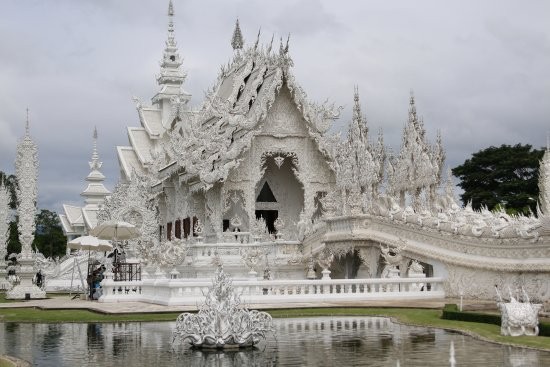 |
| Wat Rong Khun. Photo: Tripadvisor |
Wat Rong Khun, perhaps better known to foreigners as the White Temple, is a privately-owned art exhibit in the style of a Buddhist temple in Chiang Rai Province, Thailand.
Wat Rong Khun's construction began in 1997 by noted Thai painter turned architect Chalermchai Kositpipat. It is a striking structure that, from a distance, seems to be made of glittering porcelain. A closer look reveals the appearance is due to a combination of whitewash and clear-mirrored chips.
It's located about 13km south of Chiang Rai. To get here, catch any bus from Chiang Rai's interprovincial bus station with 'White Temple' written on it in English.
To enter the temple, you walk over a bridge and pool of reaching arms (symbolising desire). Inside, instead of the traditional Buddha life depictions, the artist has painted contemporary scenes representing samsara (the realm of rebirth and delusion). Images such as a plane smashing into the Twin Towers sit alongside reproductions of Keanu Reeves as Neo from The Matrix, Elvis, Hello Kitty and Superman, among many others.
5. Bridge over the River Kwai
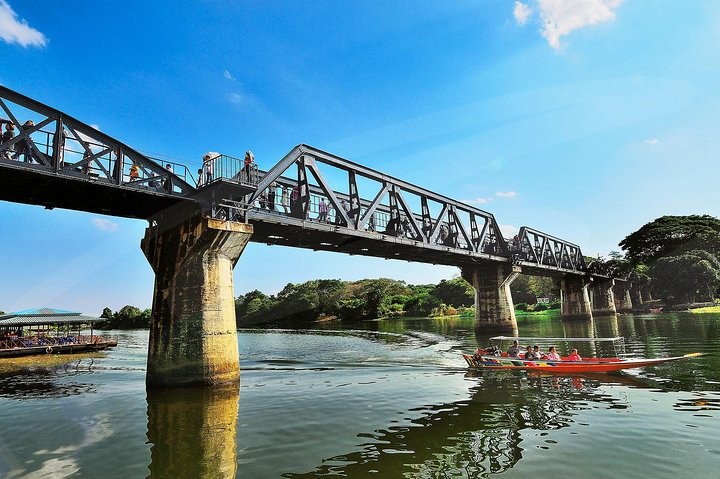 |
| Bridge over the River Kwai. Photo: Tripadvisor |
This steel bridge is one of the important historical landmarks and memorials in Thailand. It is almost a symbol of the province and is a recommended place in the Kanchanaburi travel guide. The history of the bridge is well known, as it was part of the railway lines in World War II and had seen its share of conflict and bloodshed. After World War II, the damaged bridge was renovated by the Thai government in 1946. The Bridge of the River Kwai Memorial Week is held from late November to early December every year, where there is an exhibition about World War II and the history and archaeology of the bridge. Folk performances, local goods markets, and other entertainment are also scheduled at the event. Situated not far from the bridge is Don Rak or Kanchanaburi War Cemetery, another important World War II-related place as it is where remains of the prisoners of war who had died while building the railway were buried, according to Tourismthailand.
6. State tower
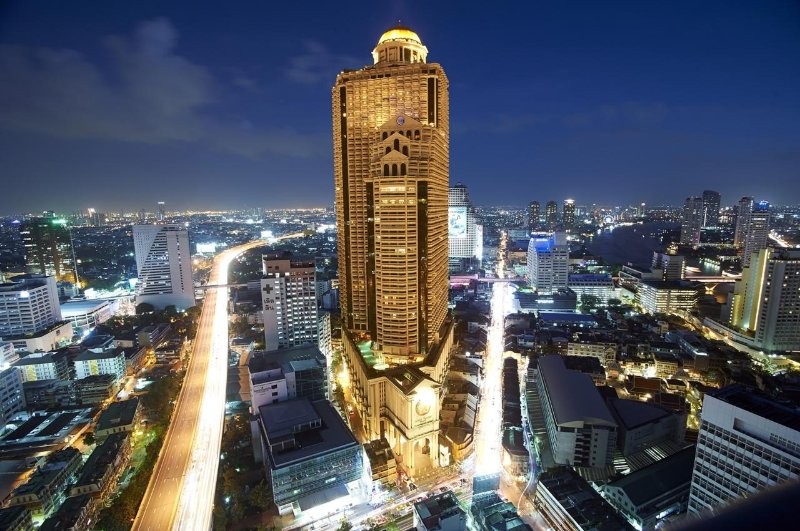 |
| State tower. Photo: Tripadvisor |
State Tower is a skyscraper located on Silom Road, Bang Rak business district, Bangkok, Thailand, adjacent to Charoen Krung Road. It has a floor area of 300,000 m2. State Tower has 68 floors and is 247m tall, making it the third tallest building in Thailand. It is also the tallest mixed-use building in Thailand.
Conceived by Thai architect Professor Rangsan Torsuwan in the early 1990s and designed by Rangsan Architecture, the massive building is characterized by its thirty-meter tall golden rooftop dome and neo-classical balconies. It was originally named "Silom Precious Tower", later "Royal Charoen Krung Tower" (RCK Tower) and then "State Tower".
State Tower contains condominiums, serviced apartments, offices and retail units. It is also home to two five-star hotels, Lebua at State Tower and Tower Club at Lebua. Sirocco, an open-air restaurant with a panoramic view of Bangkok, is located on the 63rd floor. There are two Michelin-starred restaurants on the top floors of the tower, owned and managed by Lebua Hotels and Resorts.
7. Ko Tapu
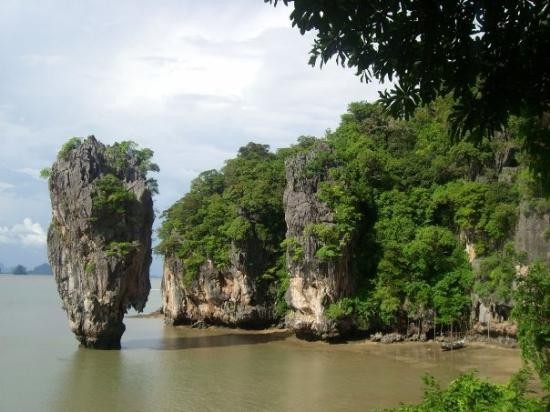 |
| Ko Tapu. Photo: Tripadvisor |
Ko Tapu is a limestone rock about 20 metres tall with the diameter increasing from about 4 metres near the water level to about 8 metres at the top. It lies about 40 metres to the west from the northern part of Khao Phing Kan.
The islands are limestone tower karsts and are a part of Ao Phang Nga National Park. Since 1974, when it was featured in the James Bond movies The Man with the Golden Gun and Tomorrow Never Dies, Khao Phing Kan has been popularly called James Bond Island.
A local legend explains the formation of Ko Tapu as follows. Once upon a time, there lived a fisherman who used to bring home many fish every time he went to the sea. However, one day he could not catch any fish despite many attempts and only picked up a nail with his net. He kept throwing the nail back into the sea and catching it again. Furious, he took his sword and cut the nail in half with all his strength. Upon impact, one half of the nail jumped up and speared into the sea, forming Ko Tapu, reported by Geologypage.
8. Maya Bay
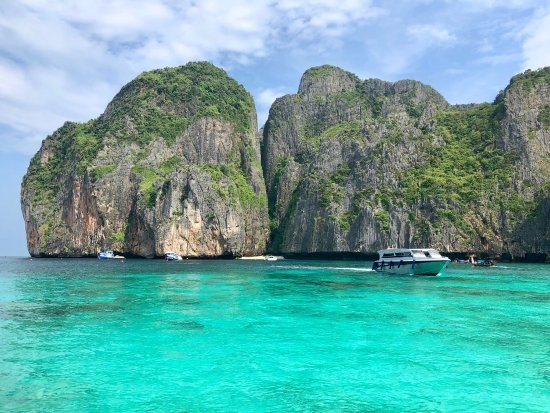 |
| Maya Bay. Photo: Tripadvisor |
Maya Bay is a stunningly beautiful bay that's sheltered by 100-metre high cliffs on three sides. Inside the bay there are several beaches, most are small and some only exist at low tide. The main one is around 200 metres long with silky soft white sand, underwater colourful coral and exotic fish in exceptionally clear water; the whole bay is one big reef.
Maya Bay has become the main tourist attraction of Phi Phi since The Beach was filmed here in 1999, according to Asiaweb.
Snorkelling is excellent throughout the bay, large underwater boulders are encrusted with coral and brightly coloured fish are numerous. Visibility is excellent. Many tour companies bring visitors here to snorkel from Phuket, Krabi and Phi Phi Don.
Sea kayaking is also popular. Kayaking tour boats come into the bay and moor while letting clients explore.
9. Haew Suwat Waterfall
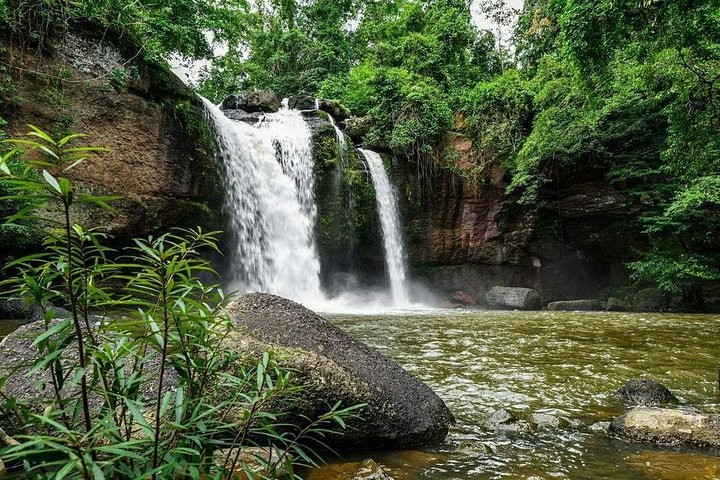 |
| Haew Suwat Waterfall. Photo: Tripadvisor |
The 25m-high Nam Tok Haew Suwat scooped a starring role in Danny Boyle's film The Beach. It has water year-round (though very little in the hot season) and you can walk down to the bottom, but swimming isn't allowed. Though accessible by car, Haew Suwat can also be reached by a couple of walking trails.
At the bottom of the waterfall is a basin and stream. It is the perfect waterfall for you if you love playing in the water. You can also relax, sit and spend time with nature.
There are spots for viewing both the cliffs and the area at the bottom of the waterfall. There is a basin and stream that you actually can swim in, but during the rainy season, the water current will be quite strong. Therefore, it is very dangerous to play with the water during the rainy season.
Haew Suwat waterfall has many activities and places for lovers of adventures to do all in a day. There are nature trails, waterfall, and you can also learn a bit of history and culture, watching birds and butterflies, riding a bicycle, rafting and boating, reported by Takemetour.
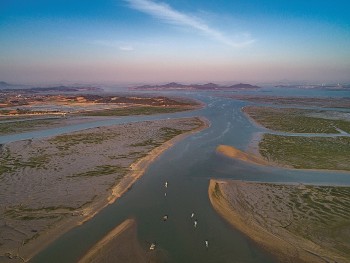 | Asian Sites Added to UNESCO World Heritage List Getbol, Korean Tidal Flats; the Kaeng Krachan Forest Complex in Thailand; and the subtropical rainforest on Japan’s four islands were inscribed onto UNESCO’s world heritage ... |
 | Vietnamese Girl's 'Zero Dong' Overseas Trip Thanh Tam made a volunteer trip to save money on accommodation in Laos, Cambodia, Thailand and Sri Lanka two years ago. |
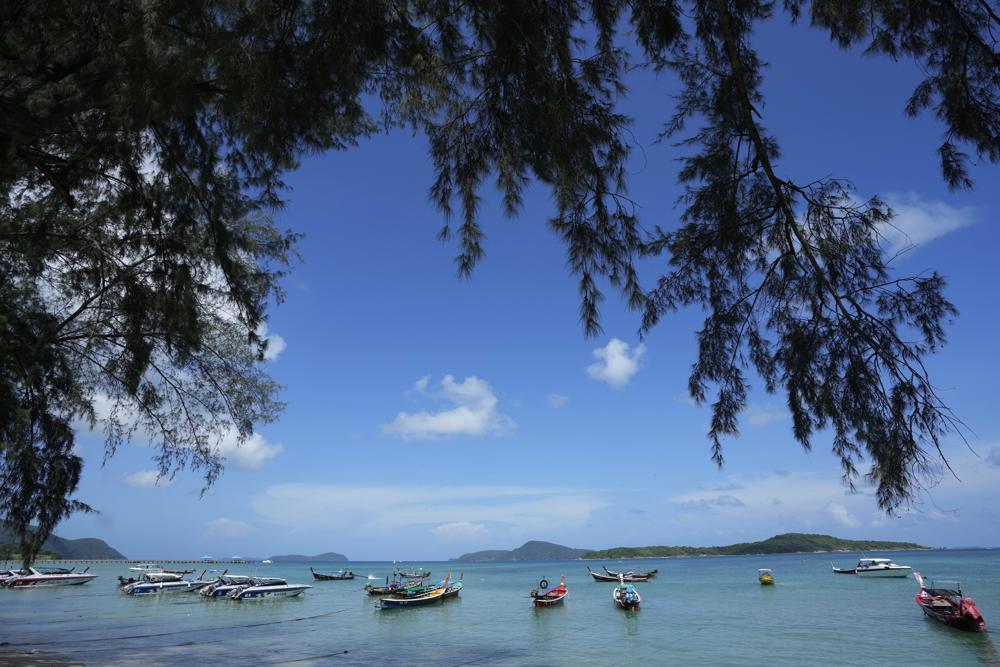 | "Phuket sandbox" plan becomes hope for Thailand to save tourism Thailand will soon welcome international tourists who are vaccinated to the famous resort island of Phuket without having to go through 14-day quarantine, in hope ... |
Recommended
 Travel
Travel
Vietnam Through Australian Eyes: Land of Flavor, Warmth, and Timeless Charm
 Travel
Travel
Strategies for Sustainable Growth of Vietnam’s Tourism from International Markets
 Travel
Travel
Vietnam Strengthens Its Presence On The Global Tourism Map
 Multimedia
Multimedia
Phong Nha-Ke Bang National Park Named Top Adventure Travel Site
Popular article
 Travel
Travel
Vietnam Welcomes Record-High Number of International Visitors
 Travel
Travel
Luxury Train From Hanoi To Hai Phong To Be Launched In May
 Travel
Travel
Phong Nha Named Top Budget-Friendly Travel Destination for Spring 2025: Agoda
 Travel
Travel




